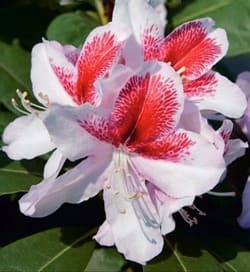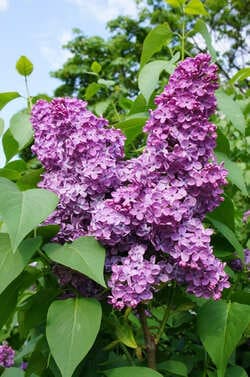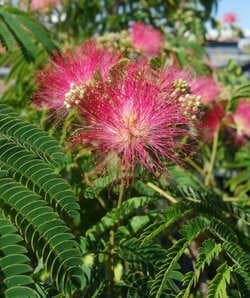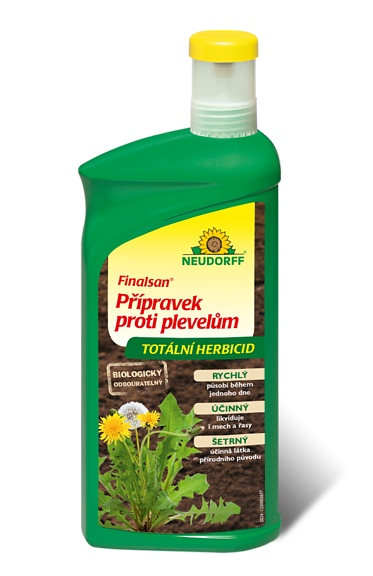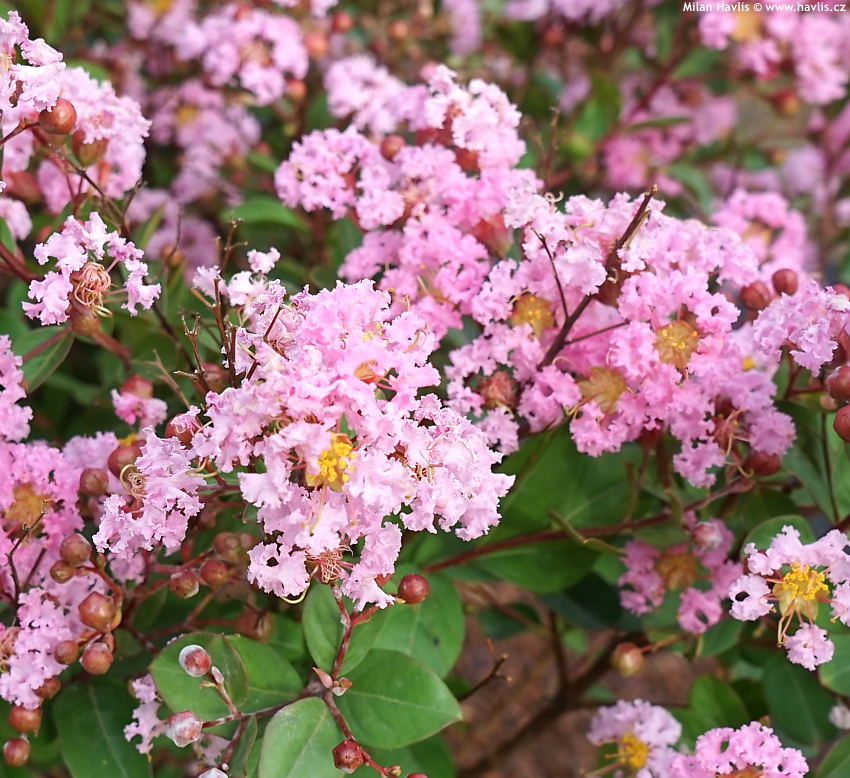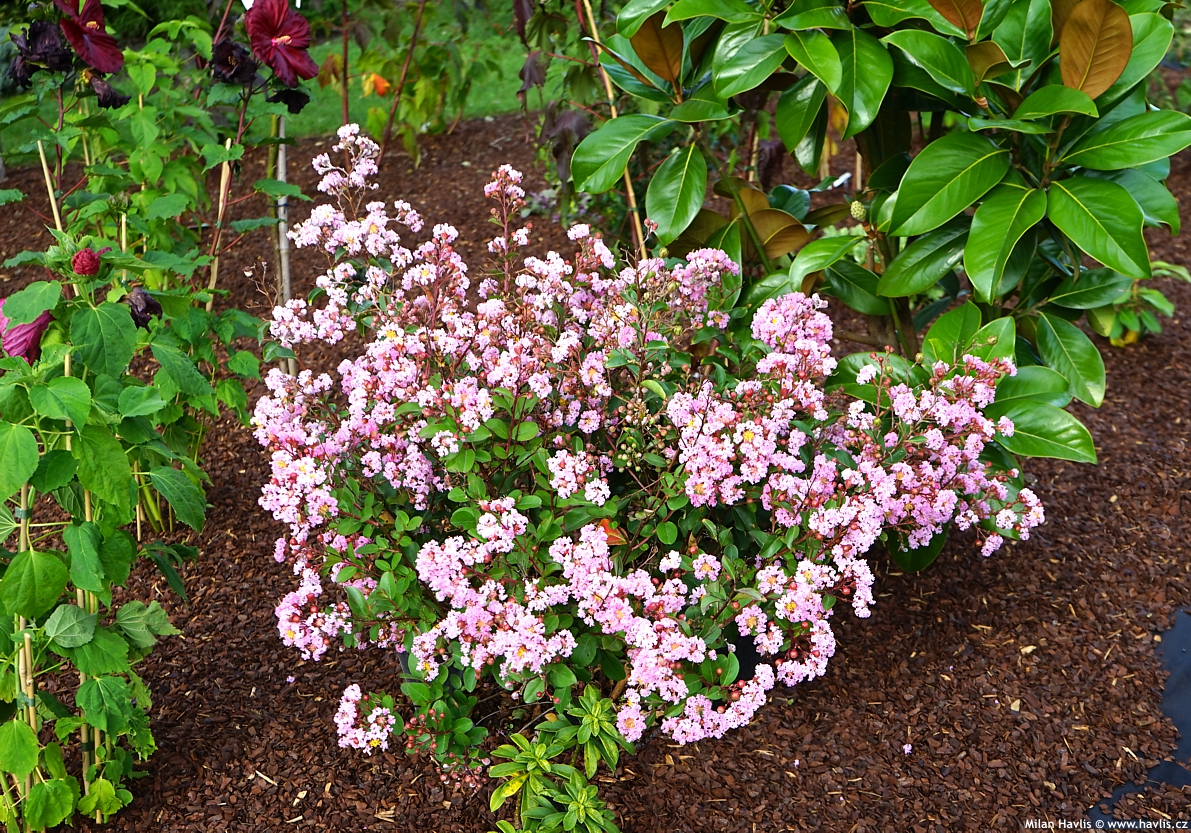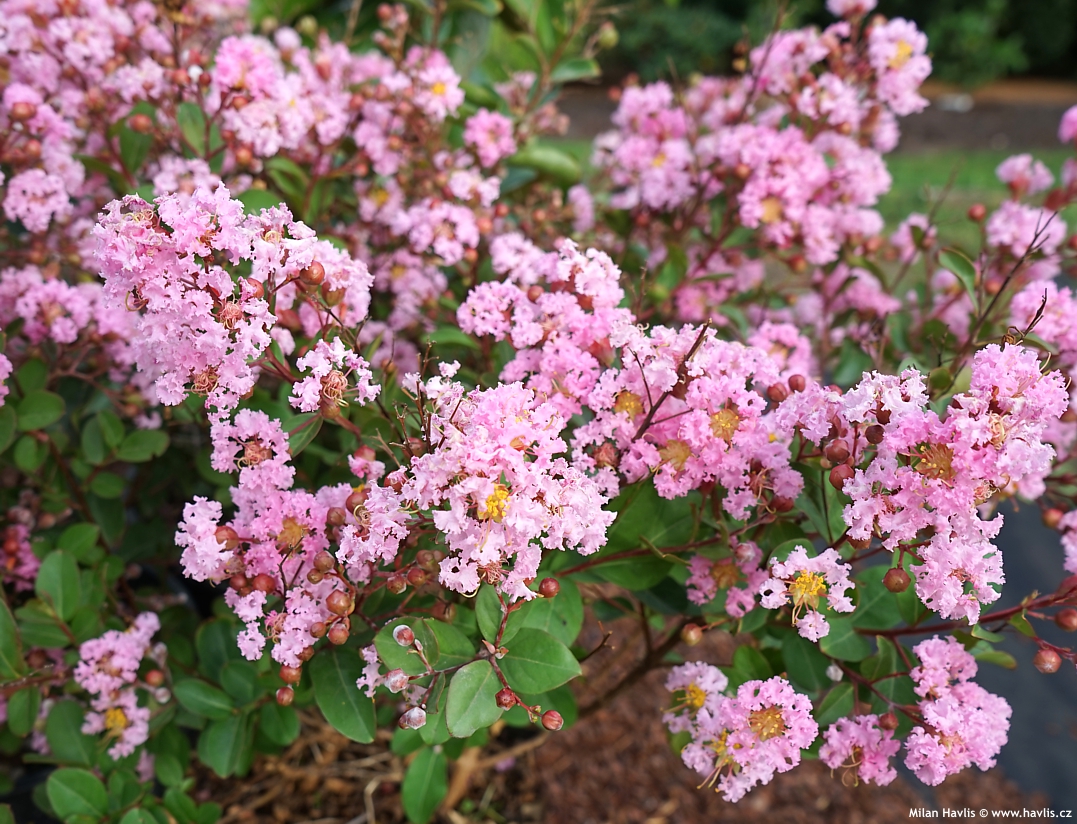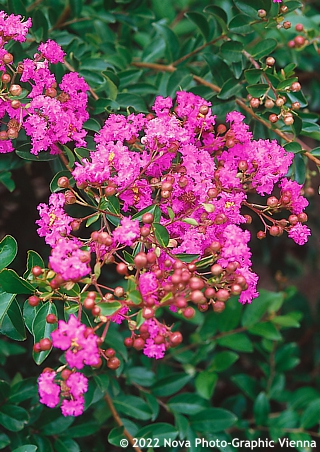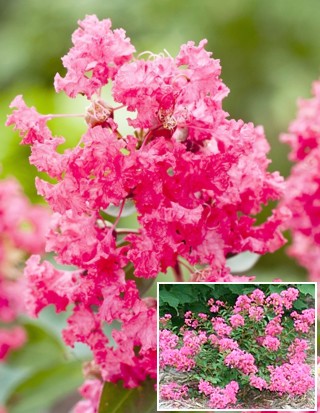Lagerstroemia indica 'PETITE PINK' crape myrtle
Lagerstroemia
Crepe myrtle is a flowering shrub or small tree from China. It was first introduced to the USA and the UK in the 18th century. The original plant lagerstroemia indica is too tender and not too pretty so breeders were working on further hybridization and the most attractive varieties available now are believed to be results of crossing with l.speciosa and l.fauriei. Far more important news for us is the fact that among those finished plants were selected others that survived lower temperatures than what was common in the areas of natural habitat so we have a few myrtles that can grow even in our climate. Some were selections, other further hybrids.
Petite Pink crepe myrtle belongs to the Petite series which means 'small' in French and that's exactly what all of its varieties are. Petite Pink has bright pink flowers composed in smaller racemes compared to tall varieties. But they appear in such abundance that they almost completely cover the plant in full bloom, same as spring azaleas. In Central European climate, it blooms from mid-August and continues for as long as it has buds, sometimes for up to 2 months.
Deciduous leaves are broadly oval, very glossy, deep green in summer and copper red in autumn. They are moderately resistant to powdery mildew and need to be treated against it during changeable weather. It grows slowly into a compact bush around one meter in height and width. In spring cut it back severely to a solid framework and let the entire bush regrow and thicken.
Crepe myrtles need little care. They need full sun with zero shade during the day. Grow them in well-drained soil that should be kept moist before the plant is fully established. If cultivated in acidic soil the plant will make fabulous colour play of autumn foliage. Crape myrtle needs heavy mulching in winter and some mulch in summer to retain moisture. Fertilize it in spring to encourage growth (nitrogen-based fertilizers), and in summer to encourage flowering (phosphorus-based fertilizers).
Compact and dwarf crepe myrtles have one advantage over tall-growing varieties: thanks to recommended back pruning their limited hardiness of wood down to only some -18 °C is not a problem even after slightly colder winters since the roots can take -23 °C if properly mulched and the plant readily regenerates from basal framework or even roots like a perennial.
Last update: 17-11-2022












